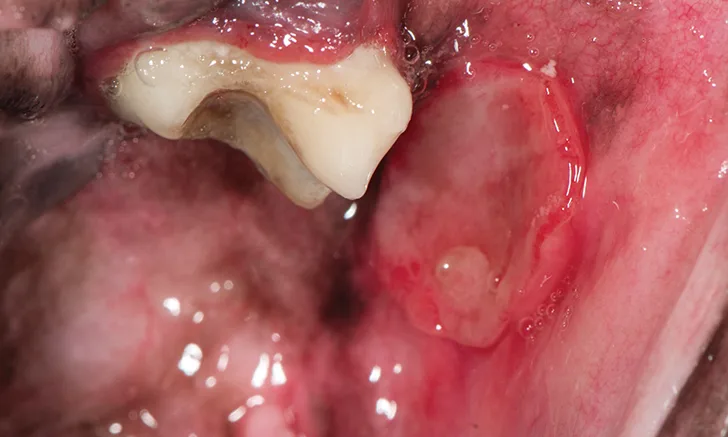Etiology of Oral Ulceration in Dogs & Cats
Jan Bellows, DVM, FAVD, DAVDC, DABVP, All Pets Dental, Weston, Florida

Oral ulcers have several causes ranging from physical trauma to malignancy and are characterized by a loss of tissue that affects both the epithelium and underlying connective tissue, the submucosa, and even muscle or periosteum.
Certain ulcerative conditions affect keratinized mucosa, whereas others are found on nonkeratinized mucosa. Oral ulcers are considered to be painful.
Erosions, sometimes mistakenly referred to as ulcerations, are shallow, craterous lesions that involve only the epithelial layer with little or no damage to the underlying connective tissue. Unlike ulcers, erosions typically do not involve a yellow fibrinous slough that covers the base of the lesion; instead, erosions may appear erythemic.
Diagnosis of an ulcer on oral examination should prompt the clinician to identify the specific etiology, immediately render therapy to eliminate the cause, and work with the owner to prevent recurrence.
The following images of erosions and ulcerations illustrate various diseases and conditions.
Image Gallery: Oral Ulceration

FIGURE 1A
Linguoversion of the mandibular canines (arrows) in a pitbull mix with traumatic ulceration.
Listen to the Podcast
Editor's note: This article was originally published in January 2019 with the title "Oral Ulceration."